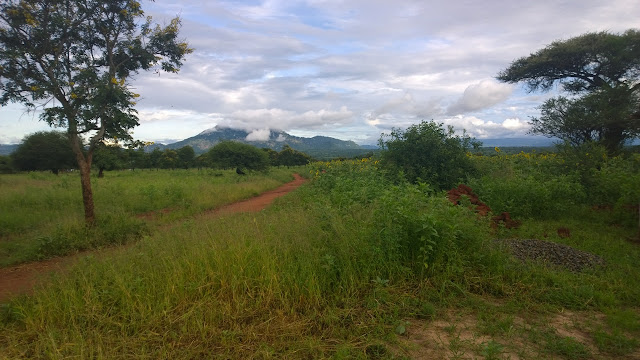No God But God
From 12 May
 |
| The Church and The Temple - May 2011 |
"When [Christian] believers see a Buddhist temple they get uneasy," explains one Pastor of the CCC. To them, "seeing a monk is like seeing a ghost." In this particular congregation, such sightings are a regular occurrence.
Located on the edge Hohhot, one of the growing urban centers of China's Inner-Mongolia Autonomous Region, this congregation is located right next to a Buddhist temple. Seen from the main road nearby, the red cross atop the church and peak of the temple structure compete with one another for prominence.
While one could perhaps imagine a scenario in which this church was planted in an intentionally evangelistic effort to proselytize and convert, the reality behind this placement of sacred spaces is entirely secular and pragmatic. In the government's urbanization plan for this area, once the apartment towers and office blocks were assigned their prime pieces of real estate, remaining lands in less than ideal locations were set aside for other uses. In this instance, the spare space behind the city's equestrian facility was marked for 'religious purposes' and thus the temple and the church were assigned adjoining plots.
For those who have recently converted to Christianity, the Pastor explains, this juxtaposition of Buddhism and Christianity can be troubling. While intellectually members know that the Bible says "Only God is God," a sense of fear still lingers instinctually. Historically Buddhism, in its varying expressions and local iterations, has had a "powerful hold on the Chinese people." Even after the Cultural Revolution and the secularization of nation, cosmologically and culturally the spirits, symbols, rites, and practices of the tradition "still have power for many."
While those who convert to Christianity ostensibly deny that power, resting their faith in the one true God over whom the idols and spirits of the temples hold no sway, the way in which Buddhism and other traditional religions have been so thickly enmeshed in Chinese culture makes a clean and immediate break with the past nearly impossible. Beyond creeds and confessions, there is the task of sorting out which pieces of one's culture can be carried forward (and allowed to have some animating power) and which ones must be left behind.
In the communities of overseas Chinese Christians I've worked with on the Malay Peninsula, this is a challenge there as well. I think of the men who, especially if they are the eldest son, have specific responsibilities in the family's funerary rites and respecting of one's ancestors; while they may be willing to make the faith claim that "there is no God but God" the demands of family and tradition to properly fulfill one's duty still hold a considerable degree of animating power. Parsing the differences between religious practice and cultural obligation for them is no easy task.
Growing up a Christian in a culture thick with my own religion, this is a challenge utterly foreign to me and is one I'd hope to be able to explore more fully in the future. I wonder how the difficulty disentangling traditional Chinese religious practices from Chinese culture faced by Chinese Christian communities in Kuala Lumpur might be compared with the issues faced here in Hohhot and elsewhere.
• Do 'traditional ways' hold greater power in one community versus the other?
• What are the 'fears' associated with Buddhism and other religions? How are those fears addressed and/or dispelled?
• Where are the lines drawn between religious acts and cultural practices in these respective communities? What can be carried forward or transformed? What must be left behind? How are those distinctions similar/different in each location and why?


Comments